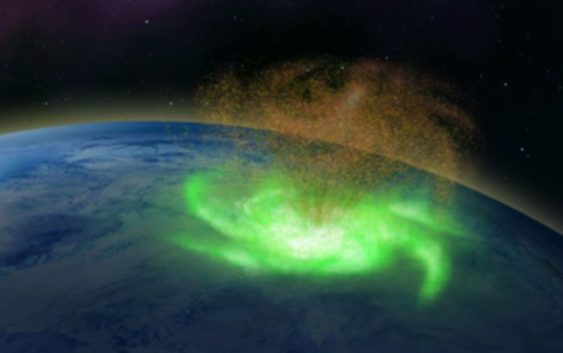Yes, 'space hurricanes' are a thing, according to a new study

Scientists discover a “space hurricane” hovering over the North Pole.
Scientists have confirmed the existence of a “space hurricane” hovering over the North Pole, according to a recent study.
ASTEROID PASSING EARTH: An asteroid the size of the Golden Gate Bridge will pass by Earth in March
“This hurricane shows strong circular horizontal plasma flow with shears, a nearly zero-flow center, and a coincident cyclone-shaped aurora caused by strong electron precipitation associated with intense upward magnetic field-aligned currents,” according to the study.
In an interview with Science Alert’s Michelle Starr, space environment physicist Mike Lockwood explained the groundbreaking nature of the phenomena.
“Until now, it was uncertain that space plasma hurricanes even existed, so to prove this with such a striking observation is incredible,” Lockwood said.
Jupiter and Saturn are also considered “extremely turbulent places,” and a good breeding ground for these hurricanes, Starr wrote. There’s also “roiling plasma tornadoes deep in the atmosphere of the Sun,” according to Starr.
Previous observations of space hurricanes were recorded by satellites in Aug. 2014. “They were only uncovered during retrospective analyses led by scientists from Shandong University in China,” according to Doyle Rice with USA Today.
Lockwood told Rice chances are no one saw the “space hurricane.”
“The phenomenon would be an incredible sight, but it’s likely no one saw this particular space hurricane. It would be visible to the naked eye but because the event is over the pole you would have to be at very high latitudes (to see it),” Lockwood said.
The “space hurricane” measured 600 miles across and was detected hundreds of miles above the North Pole, according to Rice. It “rained electrons instead of water,” according to the study.
Space physicist Qing-He Zhang of Shandong University said space hurricanes will serve as important research subjects moving forward, Starr wrote.
“In addition, the space hurricane will lead to important space weather effects like increased satellite drag, disturbances in High Frequency radio communications, and increased errors in over-the-horizon radar location, satellite navigation and communication systems.”